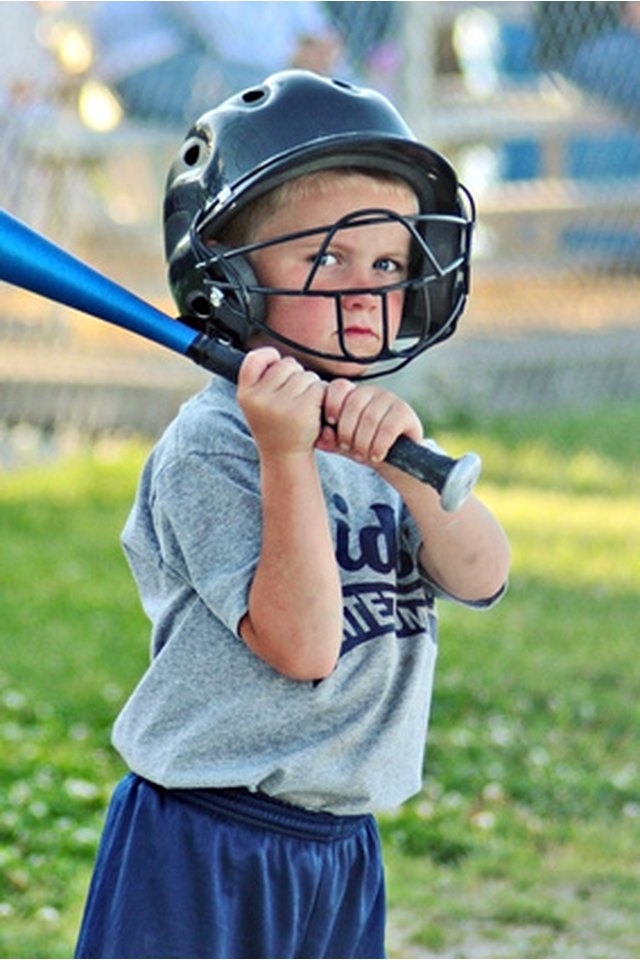How Is an Aluminum Baseball Bat Made?

Aluminum baseball bats were introduced in the early 1970s as affordable and durable alternatives to their wooden counterparts. They are available in various lengths and weights to accommodate hitters from Little League to the college ranks but the common thread between each bat is the distinct way its made. The bats are crafted in the same fashion with customized alterations made during their design to meet particular specifications.
Material
Aluminum bats are built of out of hollow aluminum alloy tubes. The tubes range from 2 to 3 inches in diameter and are cut with a saw to a desired length that can range from 22 to 35 inches.
Shaping the bat
The tube is placed into a tapering machine. The tube is slid over a mandrel bar before going into the tapering machine, where two dyes rotate around the outside of the tube. The tube will make three runs through the machine. The first two stretch the tube and thin its walls while the final pass shapes the tube into the traditional look of a bat with a long handle leading up to the barrel.
Treating the bat
The bat is placed on a measuring device to make sure it is straight and balanced. If it's not, subtle hydraulic pressure is applied and the bat is bent to conform to the specified shape. It is then heat treated in a sodium nitrate bath for 20 minutes. The solution ranges from 800 to 1,000 degrees Fahrenheit to harden the aluminum. The bat is then put into a water tank, or "quenched," before being placed in an aging oven for up to 12 hours at 300 degrees Fahrenheit to fortify the aluminum.
Paint and decals
Each bat is inspected for proper density, then hung from its handle so heavy-duty paint can be applied with a paint sprayer. The bat is then placed in a silk-screening machine, which will put on the company’s label. Designer decals are dipped into an adhesive solution and hand placed appropriately on the bats. The bats are then re-hung and sprayed with a clear coat of polyurethane. The bat is then placed upright, with the handle end nearest to the ground, and the plastic top cap is pressed into the top of the bat.
Final Touches
An aluminum knob is placed at that bottom of the bat’s handle and a welding machine welds it to the bat. The handle grip is then applied. The bat is placed into a machine and moderately spun while a technician feeds the grip to create a non-slippery handle. A small stripe of vinyl tape is then wrapped at the top of the grip to keep it from peeling off.
References
Writer Bio
A lifelong resident of New Jersey, Gregg has been writing professionally since 1989. He has covered professional, college and high-school sports as a sportswriter for The Star-Ledger. He has a Bachelor of Arts in communications from William Paterson University and was honored with the Robert Kanaby Service Award from the New Jersey Interscholstic Athletic Association in 2002.
